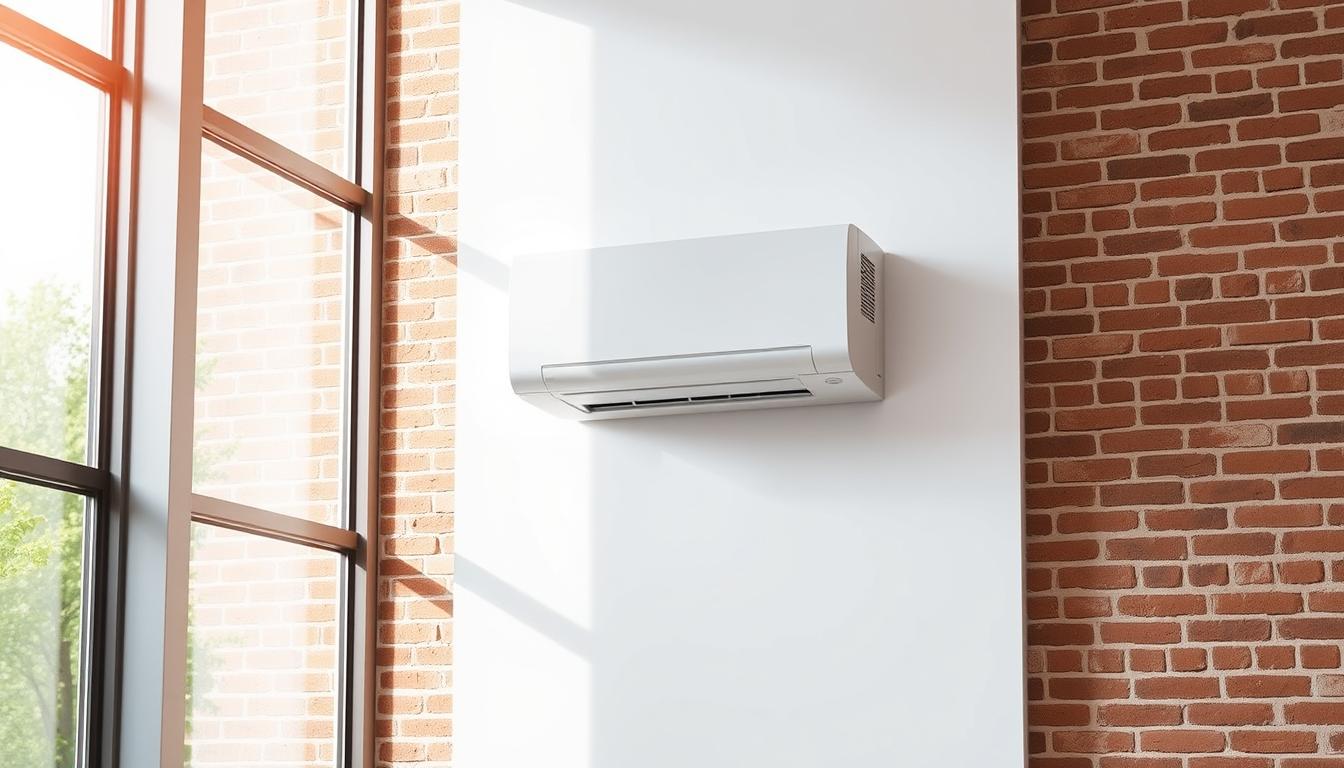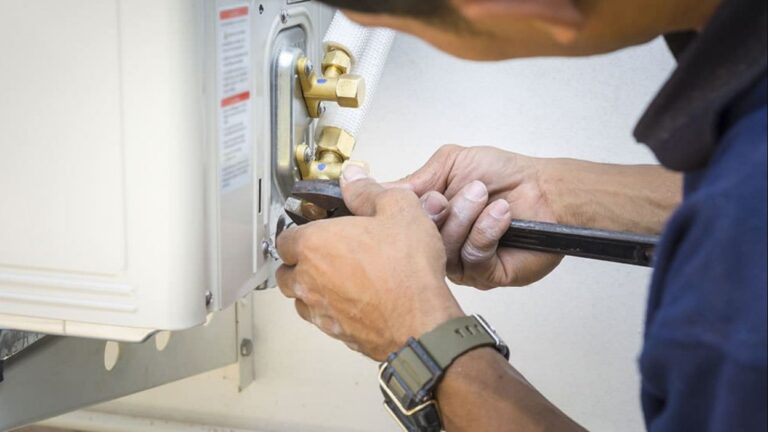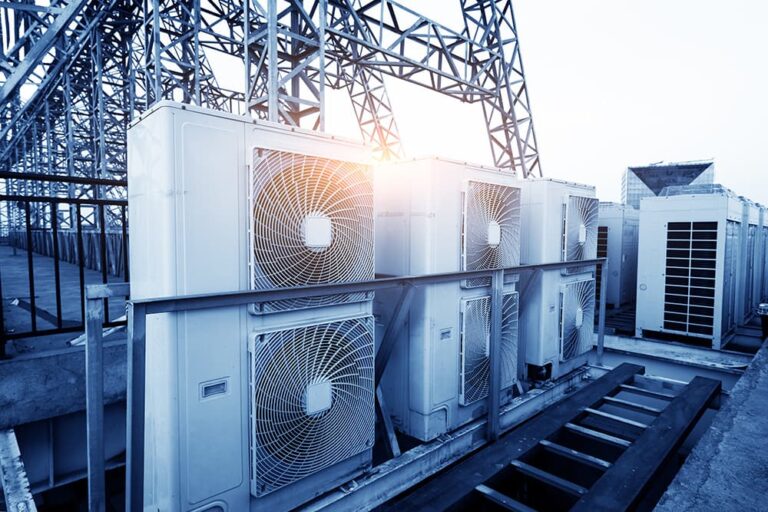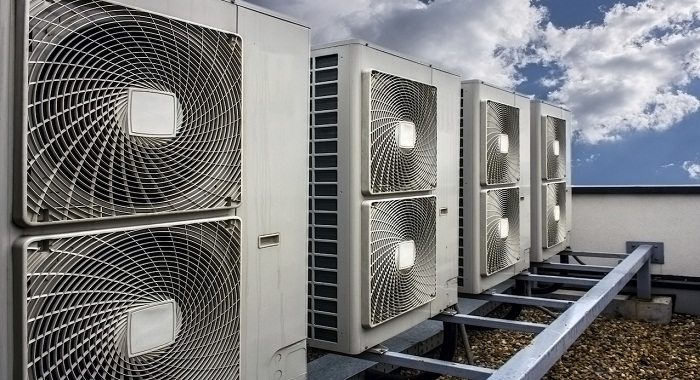Pros and Cons of Ductless HVAC Systems
Homeowners in the United States are increasingly turning to ductless HVAC systems as a viable alternative to traditional heating and cooling systems.
These systems offer a unique approach to home comfort by eliminating the need for extensive ductwork, providing both heating and cooling capabilities.
Understanding the benefits and challenges of these systems is crucial for homeowners considering this investment.
This article will explore how they work, their key components, and analyze both the advantages and disadvantages to help you make an informed decision about your home’s air quality and energy efficiency.
Key Takeaways
- Understanding the pros and cons of ductless systems for your home.
- How ductless systems can impact your energy efficiency.
- The importance of considering installation and aesthetic factors.
- Analyzing long-term performance and its effects on home comfort.
- Making an informed decision about ductless HVAC systems for your specific needs.
Understanding Ductless HVAC Systems

As homeowners seek more efficient heating and cooling solutions, ductless HVAC systems are becoming increasingly popular. These systems offer a modern alternative to traditional methods, providing energy efficiency, versatility, and ease of installation.
What Are Ductless Mini-Split Systems?
Ductless mini-split systems, also known as ductless HVAC systems, consist of two main components: an outdoor compressor/condenser unit and one or more indoor air-handling units. Unlike traditional central air conditioning systems, ductless systems deliver air directly into different zones of your home without the need for ductwork.
The indoor and outdoor units are connected by a conduit that houses the power cable, refrigerant tubing, suction tubing, and a condensate drain. This setup allows for a more flexible and efficient heating and cooling solution.
How Ductless HVAC Systems Work
Ductless HVAC systems operate using refrigerant that absorbs heat from indoor air and releases it outside during cooling mode, or reverses the process for heating. Most modern ductless systems utilize inverter technology, which adjusts the compressor speed according to the heating or cooling demands, resulting in more precise temperature control and lower energy consumption.
Key Features of Ductless HVAC Systems:
| Feature | Description | Benefit |
|---|---|---|
| Single-Zone or Multi-Zone | Can be configured as single-zone or multi-zone systems | Flexibility in heating and cooling different areas |
| Inverter Technology | Adjusts compressor speed according to heating or cooling demands | More precise temperature control and lower energy consumption |
| No Ductwork | Eliminates energy losses associated with ductwork | Energy efficiency and cost savings |
Key Components of Ductless HVAC Systems
Understanding the key parts of ductless HVAC systems is crucial for appreciating their functionality. These systems are composed of several critical components that work in harmony to provide efficient heating and cooling.
Outdoor Compressor Unit
The outdoor unit of a ductless mini-split AC contains the compressor and the condenser. It is responsible for pressurizing and circulating refrigerant through the system. The outdoor compressor unit houses vital mechanical components, including the compressor, condenser coil, and expansion valve.
- The outdoor unit is designed to be weather-resistant and operates efficiently in various climate conditions.
- Modern outdoor units are built to withstand different environmental factors, though their performance may vary in extreme temperatures.
Indoor Air Handling Units
The indoor air handling units, also known as air handlers or heads, contain the evaporator coil and a quiet fan that distributes conditioned air throughout the room. These units come in various styles, including wall-mounted, ceiling-recessed, floor-standing, and concealed duct models, to accommodate different aesthetic preferences and installation requirements.
- Indoor units are designed to provide quiet operation and efficient air distribution.
- The variety of indoor unit styles allows for flexible installation options.
Refrigerant Lines and Conduit
The refrigerant lines and electrical conduit connect the outdoor and indoor units through a small 3-inch hole in the exterior wall. The conduit bundle typically contains copper tubing for refrigerant, a power cable, a condensate drain line, and sometimes additional control wiring for advanced features.
- The refrigerant lines play a crucial role in the cooling process.
- Proper installation of the conduit is essential for the system’s overall performance.
The Major Advantages of Ductless HVAC Systems

Ductless HVAC systems have gained popularity due to their energy efficiency, flexibility, and quiet operation. These systems offer a range of benefits that make them an attractive option for homeowners looking to improve their heating and cooling solutions.
Energy Efficiency and Cost Savings
Ductless mini-split systems are more efficient at delivering conditioned air directly to individual rooms in a home, compared to traditional window units that lose up to 30% of their heating or cooling energy through ductwork. This not only reduces energy waste but also translates into lower utility bills. Some ductless models achieve SEER ratings up to 30, significantly higher than traditional systems that typically range from 14-17 SEER.
Homeowners can save up to 50% on monthly heating and cooling costs due to the elimination of energy losses through ductwork. This makes ductless HVAC systems a cost-effective solution in the long run.
| System Type | SEER Rating | Energy Savings |
|---|---|---|
| Ductless HVAC | Up to 30 | Up to 50% |
| Traditional HVAC | 14-17 | – |
Easy and Flexible Installation
The installation of ductless HVAC systems is remarkably straightforward compared to ducted systems. It requires only a small 3-inch hole in the exterior wall, rather than extensive ductwork that may involve cutting into walls, ceilings, or floors. This flexibility makes ductless systems ideal for older homes, historic properties, or buildings where installing ductwork would be impractical or expensive.
Zoned Temperature Control
Ductless HVAC systems allow for zoned temperature control, enabling homeowners to heat or cool only the spaces they are using. This not only enhances comfort but also contributes to energy savings by avoiding the waste of heating or cooling unoccupied spaces. Different temperatures can be set for different zones, providing customized comfort throughout the home.
Improved Indoor Air Quality
Ductless systems eliminate the air quality issues associated with dust and allergen accumulation in ductwork. Most ductless systems feature multi-stage filtration that can dramatically reduce dust, bacteria, pollen, allergens, and other particulates compared to traditional systems. This results in improved indoor air quality, creating a healthier living environment.
Quiet Operation
The indoor units of ductless HVAC systems operate very quietly, with some models as low as 19 decibels, comparable to the sound of rustling leaves. This creates a peaceful home environment without the disruptive noise of conventional HVAC systems.
Ideal for Home Additions and Renovations
Ductless HVAC systems are particularly valuable for home additions, sunrooms, converted attics or basements, and renovations where extending existing ductwork would be costly or impractical. Their flexibility and ease of installation make them an ideal solution for these applications.
Ductless HVAC Pros and Cons: The Disadvantages
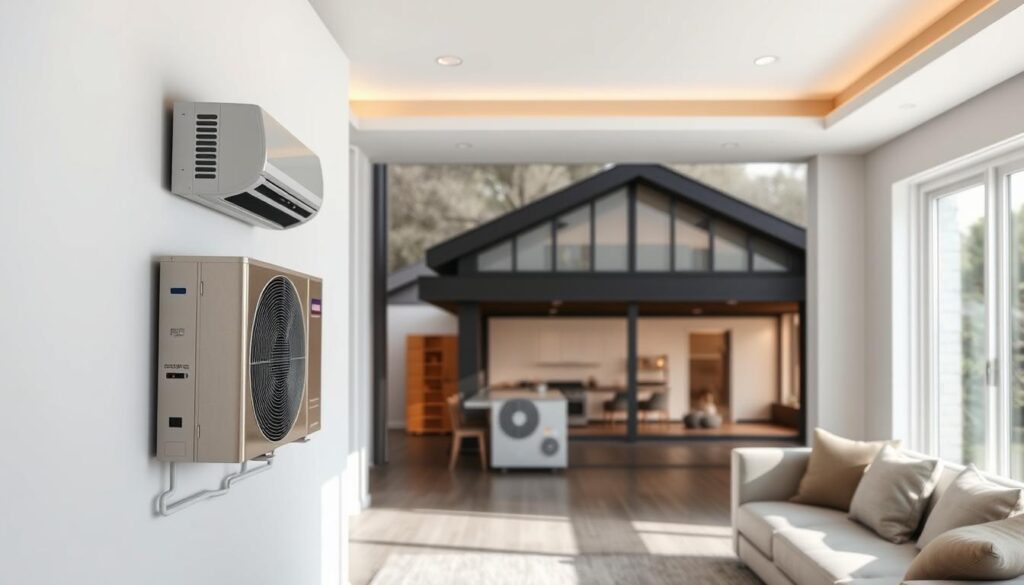
While ductless HVAC systems offer numerous benefits, they also come with several drawbacks that homeowners should consider. Understanding these disadvantages is crucial for making an informed decision about whether a ductless HVAC system is right for your home.
Higher Upfront Installation Costs
One of the significant cons of ductless HVAC systems is their higher upfront installation costs. The initial investment includes not only the equipment but also professional installation, which requires specialized training and certification to handle refrigerant lines and electrical connections. According to various sources, the prices of ductless HVAC systems are typically 30% more than traditional ducted systems of comparable capacity. For more detailed information on the costs and benefits, you can visit this page to learn more about mini-split pros and cons.
Aesthetic Concerns and Space Requirements
Aesthetic concerns arise from the visibility of indoor air handling units mounted on walls or ceilings, which some homeowners find disruptive to their interior design. Although manufacturers have made efforts to create sleeker and more attractive units, the visibility of these units remains a concern. Additionally, space requirements for multiple indoor units must be considered, as each zone requires its own air handler that needs adequate clearance and proper placement for optimal air distribution.
Maintenance Demands
Maintenance demands are more frequent with ductless systems, as filters require monthly cleaning (more often with pets or in dusty environments) to prevent performance issues and system damage. Professional maintenance is recommended at least annually to check refrigerant levels, clean components thoroughly, and ensure optimal system performance.
Performance Limitations in Extreme Temperatures
Ductless HVAC systems may have performance limitations in extreme temperatures, particularly in very cold climates where heating capacity may be reduced when outdoor temperatures drop significantly below freezing. Some models may require supplemental heating sources in regions with prolonged sub-zero temperatures to maintain comfortable indoor conditions.
Limited Ventilation Capabilities
Limited ventilation capabilities present a disadvantage compared to ducted systems, as ductless mini-splits recirculate existing indoor air rather than introducing fresh outdoor air. This limitation may necessitate additional ventilation solutions in tightly sealed homes to maintain healthy indoor air quality and meet building code requirements for air exchanges.
| Disadvantage | Description | Impact |
|---|---|---|
| Higher Upfront Costs | Initial investment is higher due to equipment and professional installation costs. | Financial burden on homeowners. |
| Aesthetic Concerns | Indoor units are visible and may disrupt interior design. | Affects home aesthetics. |
| Maintenance Demands | Filters require frequent cleaning, and professional maintenance is needed annually. | Increased maintenance costs and effort. |
Comparing Ductless Systems to Traditional HVAC
As homeowners increasingly look for efficient and cost-effective heating and cooling solutions, comparing ductless systems to traditional HVAC systems becomes crucial. Both types of systems have their unique characteristics, advantages, and disadvantages.
Ductless mini-split systems and traditional HVAC systems share some similarities. Both include an outdoor unit and at least one indoor unit, and both are designed to move heat energy into or out of your living space. However, they differ significantly in their approach to distributing conditioned air.
Ductless vs. Central Air Conditioning
One of the primary differences between ductless and traditional HVAC systems lies in how they distribute conditioned air. Central air conditioning systems rely on a network of ducts and vents to circulate air throughout the home. In contrast, ductless systems deliver air directly into individual zones without the need for ductwork. This fundamental difference affects not only the installation process but also the overall efficiency and cost of the systems.
For instance, the installation of central air conditioning involves extensive ductwork, which can be time-consuming and disruptive. It also requires significant space in attics, basements, or crawl spaces. On the other hand, ductless systems eliminate the need for ductwork, reducing energy losses associated with ducts, which can account for up to 30% of energy consumption in conventional systems.
Cost Comparison: Short-Term vs. Long-Term
The cost comparison between ductless and traditional HVAC systems reveals different advantages in the short term versus the long term. Initially, traditional ducted HVAC systems generally have lower upfront costs for whole-home applications, making them more affordable for many homeowners. However, the long-term operational costs favor ductless systems due to their higher efficiency ratings and zoning capabilities, which can result in significant energy savings over time.
| System Type | Short-Term Costs | Long-Term Costs |
|---|---|---|
| Traditional HVAC | Lower upfront costs | Higher energy bills |
| Ductless HVAC | Higher upfront costs | Lower energy bills due to higher efficiency |
For more detailed information on ductless mini-split systems, you can refer to our comprehensive guide on mini-split systems.
Is a Ductless HVAC System Right for Your Home?
Evaluating whether a ductless HVAC system is the right choice for your home requires a thorough analysis of its advantages and disadvantages. As you’ve seen, these systems offer numerous benefits, includingimproved energy efficiencyandzone-specific temperature control, making them particularly appealing for homeowners with varied heating and cooling needs.
When determining if a ductless HVAC system is suitable for your home, consider factors such as your home’s layout, climate, and budget constraints. Ductless systems are ideal for homes without existing ductwork, older properties, or homes with additions that aren’t connected to the central HVAC system. They also offeradvanced filtrationand eliminate duct-related contaminants, enhancing indoor air quality.
However, it’s crucial to weigh these benefits against the potential drawbacks, including higher upfront costs and aesthetic concerns. Climate considerations also play a significant role; ductless heat pumps perform well in moderate climates but may require supplemental heating in extremely cold regions.
To make an informed decision, consider consulting with multiple HVAC professionals who specialize in ductless systems. They can provide accurate assessments and quotes tailored to your home’s specific needs. Additionally, explore available rebates, tax incentives, and financing options to help offset the initial investment.
Ultimately, the decision between ductless and traditional HVAC options should balance your immediate budget constraints with long-term considerations for comfort, efficiency, and home value. By carefully evaluating the pros and cons of ductless HVAC systems, you can make a decision that best suits your home and needs.

